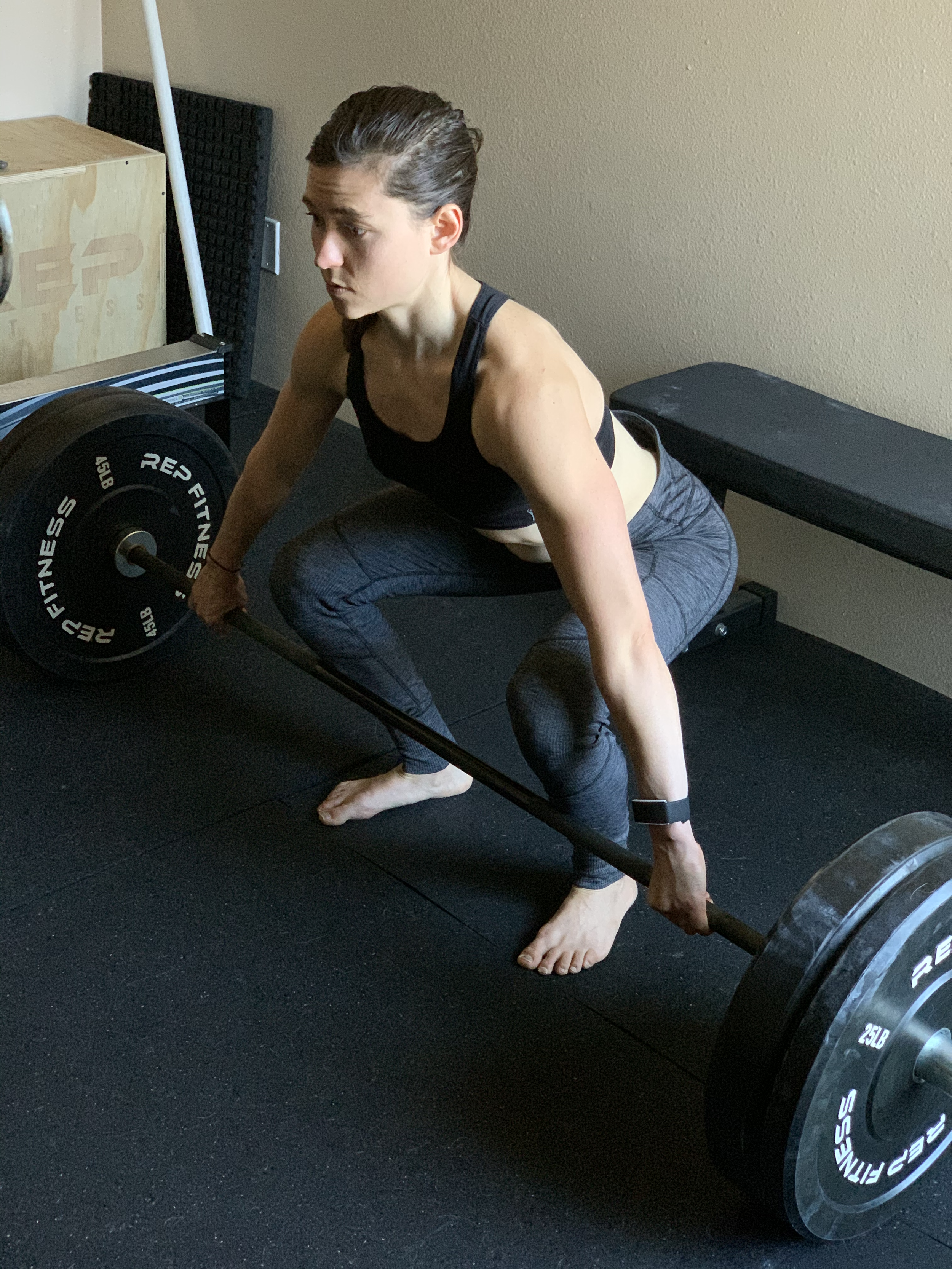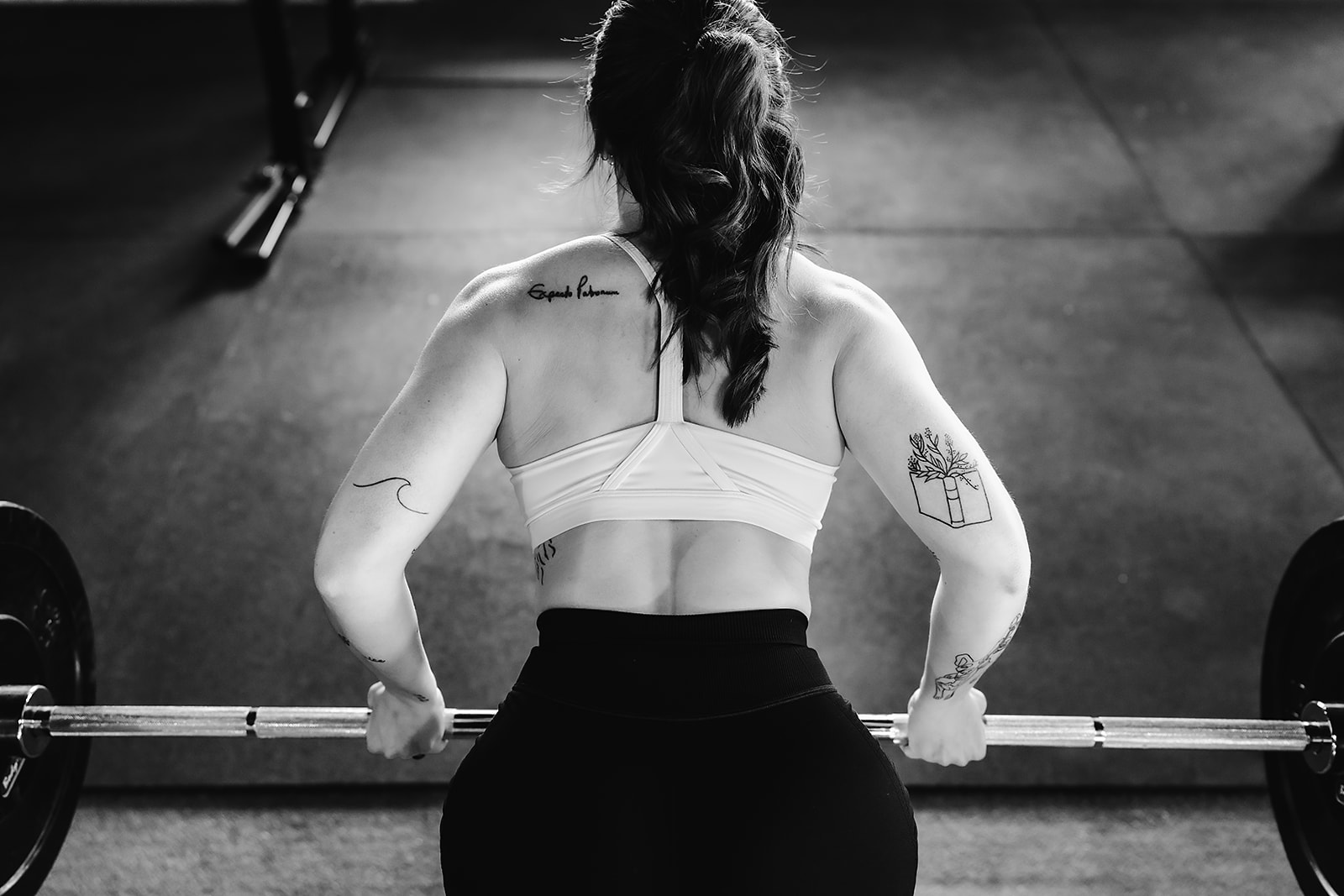What is the Best Training Split?
Your training split is just what it sounds like – it’s the way you split up your training. You can break up your training into specific body part days, upper and lower body days (upper lower split), full body days, or more. – there are a ton of possibilities.
The most important factor you want to consider when choosing a training split is frequency. How many days per week do you want to train?
This article highlights two popular training splits, but there are many ways to program that can be effective based on your goals. In this article, we discuss the two workout splits we find to be most effective for our busy clients looking to get the most out of their time in the gym.
Training Split Considerations
Frequency
How often can you train? If you only have 2 days per week to train, then a body part split probably isn’t the best choice for you. Most programs structured this way require 6 days per week of training to ensure you’re hitting every body part.
Volume
Finding your ideal training volume is key to getting results. Your training volume needs depend on your training history, age, size, goals, stress levels, sleep habits, nutrition, and more. Once you determine your volume needs, you can decide how often you need to train to hit those targets.
If you’re training for general health and strength, chances are you don’t need to train 6 days per week to get reach your goals. However, if you’re training to be competitive in a sport, you may need to consider at least a 4 day training schedule if you need more volume.
Goals
Your training split can change depending on your end goal. People with general fitness and health goals will have different training splits than competitors.
Time
You want to ensure you’re choosing a training split that aligns with your lifestyle.
If you choose a training split that requires more time than you can commit, you won’t feel successful in your pursuit as you miss sessions. Set realistic goals that make sense for you and choose your training split based on those goals and the time you can commit to them.
Recovery
Consider your overall recovery when choosing a training split. How well do you sleep? Do you have a stressful job? Are you typically feeling run-down or especially sore after workouts? Adjust your training days to allow for sufficient recovery time.
Full Body Training Split (2 or 3 Days Per Week)
Full body training splits allow you to train your whole body in one session AND they generally only require 2-3 days per week of time dedicated to training.
This is generally what we do with most of our busy clients seeing as they don’t usually have 6 days per week to train. You’ll want to make sure these training sessions include mostly compound lifts (squats, bench press, rows, etc.) and that you have an upper body pushing and pulling movement as well as a lower body pushing and pulling movement in each session.
Sample 2 day training split (can also be used for a three day split workout):
Day 1
Squats
Bench Press
Rows or Pull Ups
Romanian Deadlift
Plank
Farmers Carry
Lying Triceps Extension
Day 2
Deadlifts
Overhead Press
Different Row variation or Chin Up
Bulgarian Split Squats
Oblique Cable Twist
Barbell Curl

Choosing these types of movements ensure you are getting the most bang for your buck in each training session.
With a 2 or 3 day training split that involves a full body workout each session, you’re also ensuring you have enough frequency per muscle group versus the upper lower split. Hitting the same muscle group multiple times per week will ensure faster strength and muscle mass gains.
Training 2 or 3 days per week also ensures you’re able to get a solid recovery in between each session. Your central nervous system also has additional time to recover so you can be more optimal in your next training session.
Full body workouts are also a great option if you’re working out at home. Home workouts, like our Bodyweight workout program, can be structured well using a full body split if you aren’t able to commit to more than three days per week.
Upper Lower Split
We utilize an upper lower split for clients who want to spend a little more time in the gym. Generally, we write out two upper body workout days and two lower body workout days per week in this split. We start off each session with a main, compound lift or two and follow it up with some accessory movements focused around the client’s weaknesses. This split allows for enough frequency for each muscle group while also getting clients more time in the gym.
Sample Upper/Lower Training Split:
Day 1
Squats
Barbell Split Squats
Walking Lunges
Horse Stance Squats
Farmers Carry
Day 2
Bench Press
Dumbbell Shoulder Press
Barbell Row
Barbell Curl
Lying Triceps Extension
Side Plank
Day 3
Deadlifts
Single Leg Romanian Deadlifts
Hip Thrusts
Cossack Squats
Active Pigeon Stretch
Day 4
Overhead Press
Pull Up or Chin Up
Incline Dumbbell Bench Press
Alternating Dumbbell Hammer Curl
Bench Dips
Reverse Crunch
Breaking up training this way allows you to fully recover each body part in between training days and lets you get a little more structure and volume into your training! If you like this style of training, our Bend Don’t Break program includes 5 training days per week, with the 5th day serving as a mobility day.
What is your favorite training split?
Want to upgrade your training program? Book a free call with us to chat about your program.
We can help you take your training to the next level with a solid, individualized program.



